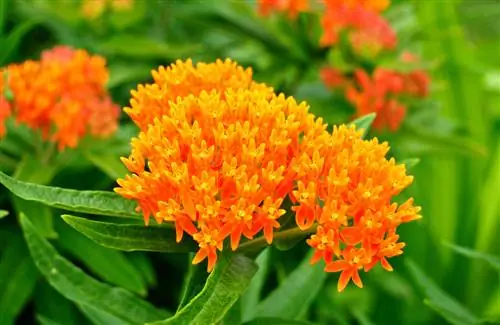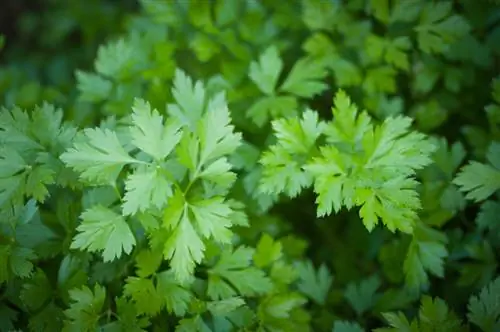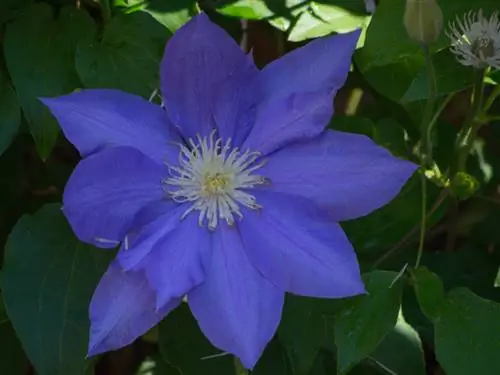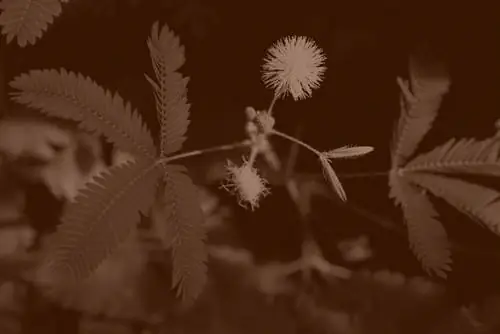- Author admin [email protected].
- Public 2023-12-16 16:46.
- Last modified 2025-01-23 11:21.
Asclepias tuberosa or milkweed is an ornamental plant of which there are many different species. Since not all varieties are hardy, they are usually cultivated as pot plants or houseplants. This is what proper care of Asclepias tuberosa looks like as a houseplant.
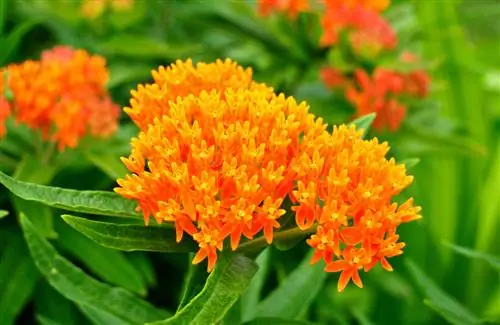
How do I care for Asclepias tuberosa as a houseplant?
Proper care of Asclepias tuberosa as a houseplant includes abundant watering without waterlogging, fertilization every 14 days, pruning for better branching, repotting if necessary, pest control and overwintering at at least 10 degrees Celsius. Watch out for root rot if there is too much moisture.
How do you water Asclepias tuberosa correctly?
During the growth phase from spring to late summer, water Asclepias tuberosa generously without allowing waterlogging. Do not leave water in the saucer or planter.
In winter, the amount of watering is significantly reduced. The plant substrate should not dry out completely.
When do you fertilize milkweed plants?
Fertilize the milkweed plant every 14 days during the growth phase with liquid fertilizer (€14.00 on Amazon) for flowering plants.
Is Asclepias tuberosa cut?
Most varieties of Asclepias tuberosa tolerate cutting well. They are cut so that they branch better and to prevent baldness at the bottom.
To extend the flowering period, cut off any dead flowers immediately.
In spring, shorten the branches to 20 to 25 cm.
What should you consider when repotting?
Repot the Asclepias tuberosa in spring if the previous pot has become too small.
The milkweed plant can be easily divided to multiply it. However, you have to wait until after flowering. In this case, repot the Asclepias tuberosa later.
What diseases and pests do you need to watch out for?
Diseases usually only arise when there is too much moisture in the root area. The roots can then rot.
Pests such as aphids and whiteflies are more common. Therefore, examine the plant regularly.
How to care for Asclepias tuberosa in winter?
Many varieties of Asclepias tuberosa are not hardy or only partially hardy. Varieties that are not hardy must not be kept cooler than ten degrees. When it gets colder, the leaves fall off.
Bring the bucket into the house in good time before the nighttime temperatures drop too much. During wintering, watering is moderate and fertilization is no longer applied.
Asclepias tuberosa kept outdoors should be covered with leaves or brushwood in autumn.
Tip
The fruits of Asclepias tuberosa are edible as long as they have not yet formed seeds. The plant itself belongs to the dogpoison family and is therefore poisonous.

